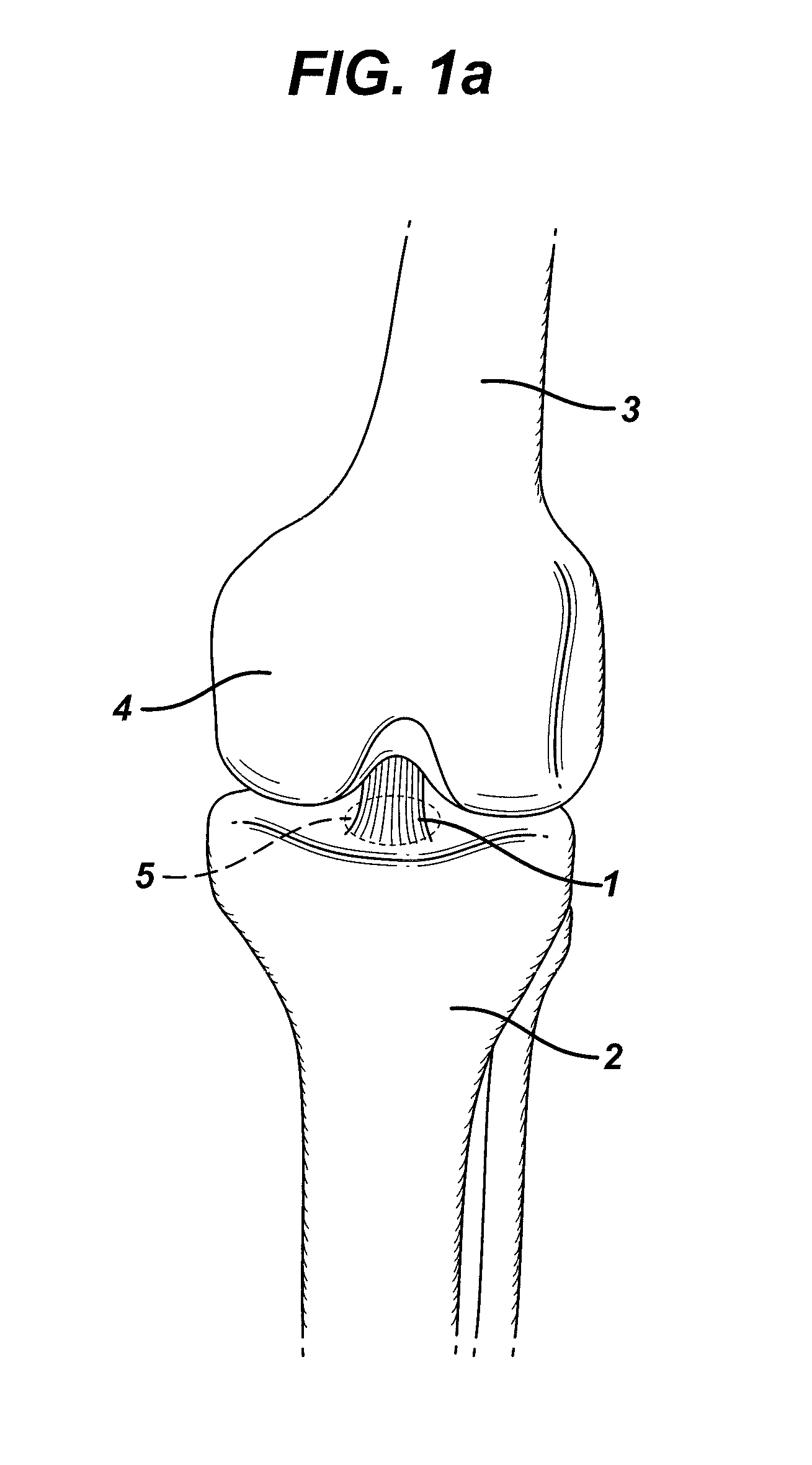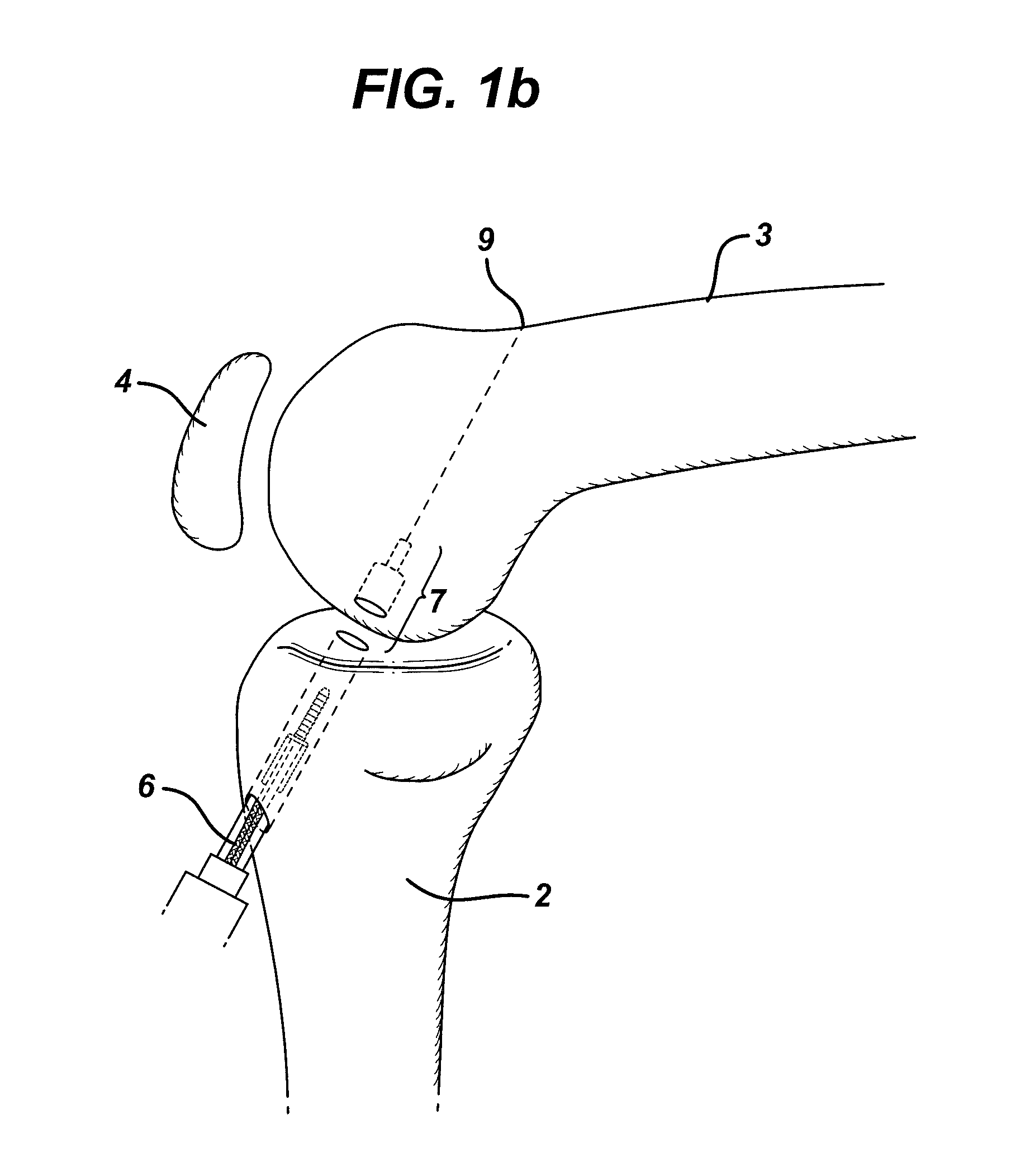Method of anchoring autologous or artificial tendon grafts in bone
a technology of autologous or artificial tendon grafts and bone, applied in the field of surgical systems, can solve the problems of cruciate ligaments, difficult to harvest tendon, postoperative complications, etc., and achieve the effect of strong pressure fi
- Summary
- Abstract
- Description
- Claims
- Application Information
AI Technical Summary
Benefits of technology
Problems solved by technology
Method used
Image
Examples
Embodiment Construction
[0041]FIG. 1a depicts a partially torn ligament of the knee, e.g., the anterior cruciate ligament (ACL) 1. In the illustration, the ACL is attached to a depression in the anterior intercondylar area (not shown) on the surface of the tibial plateau 5. This tibial attachment lies in front of the anterior intercondylar tubercle and is blended with the anterior extremity of the lateral meniscus (not shown). It passes upward, backward, and laterally to be fixed into the posterior part of the medial surface of the lateral condyle (not shown) of the femur 3. The tibia 2 and the patella 4 are also shown.
[0042]FIG. 1b depicts a method for creating a stepped tunnel 7 through the tibia 2 and partially through the femur 3 for insertion of an anchor assembly of the invention. In the illustration, a drill 6 is used by the surgeon to drill a tunnel beginning at the anterior surface of the tibia 2 and ending within the cancellous region of the femur 3. The drill tunnel 7 preferably will enter the f...
PUM
 Login to View More
Login to View More Abstract
Description
Claims
Application Information
 Login to View More
Login to View More - R&D
- Intellectual Property
- Life Sciences
- Materials
- Tech Scout
- Unparalleled Data Quality
- Higher Quality Content
- 60% Fewer Hallucinations
Browse by: Latest US Patents, China's latest patents, Technical Efficacy Thesaurus, Application Domain, Technology Topic, Popular Technical Reports.
© 2025 PatSnap. All rights reserved.Legal|Privacy policy|Modern Slavery Act Transparency Statement|Sitemap|About US| Contact US: help@patsnap.com



